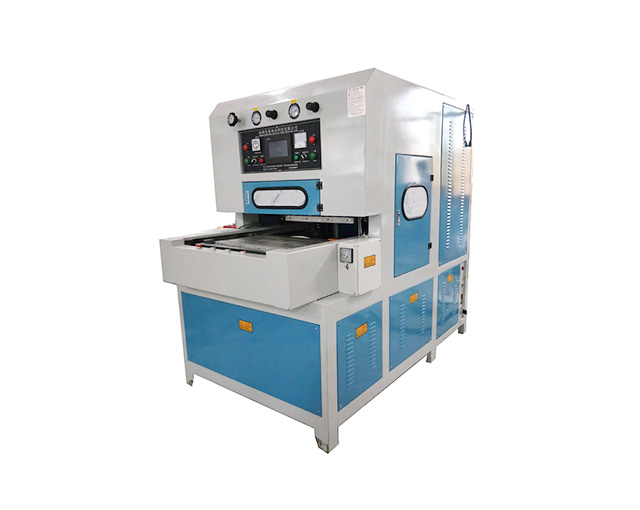Time:2025-07-23 Views:1 source:News

Setting the correct time parameters for high-frequency embossing machines is crucial to achieving high-quality embossing results while preventing material damage and ensuring operational efficiency. The time settings primarily include heating time, pressure-holding time, and cooling time, each of which must be adjusted based on the material type, thickness, and embossing complexity.
Heating time refers to the duration during which the high-frequency electric field is applied to the material, generating heat through dielectric loss to soften the material for embossing. For thin materials such as PVC sheets (0.1–0.5 mm), the heating time is typically set between 0.5 and 2 seconds. Thicker materials like rubber or leather (1–3 mm) require longer heating times, ranging from 2 to 5 seconds, to ensure the heat penetrates evenly. Overly short heating times result in incomplete embossing with blurred patterns, while excessive heating can cause material scorching, discoloration, or even melting, especially for heat-sensitive materials like PE.
Pressure-holding time is the period during which the embossing die remains pressed against the material after heating, allowing the pattern to set. This is usually 1–3 seconds for most materials, but it should be extended for materials with high elasticity, such as silicone, to prevent pattern rebound. The pressure-holding time must be coordinated with the heating time; insufficient pressure holding may cause the embossed pattern to lose definition once the pressure is released.
Cooling time is essential for materials that harden quickly, such as certain plastics. It involves maintaining pressure while allowing the material to cool, ensuring the embossed pattern retains its shape. Cooling time typically ranges from 1 to 4 seconds, depending on the material’s thermal conductivity. Metals or materials with high thermal conductivity may require shorter cooling times, while insulating materials like foam need longer periods to dissipate heat.
Operators should also consider the embossing area: larger patterns require longer heating and pressure-holding times to ensure uniform results across the entire surface. Additionally, regular testing with sample materials is necessary to fine-tune the time settings, especially when switching between different materials or embossing designs. By balancing these time parameters, high-frequency embossing machines can achieve consistent, high-quality results while minimizing material waste and energy consumption.
Read recommendations:
Semi-automatic plastic bag making machine
Double Head Pedal HF Wedling and Cutting Machine
HF Leather welder.What are the main precautions of ultrasonic embossing machine
Embossing Process of Top - Grain Cowhide with Leather Embossing Machines
Complete control over products allows us to ensure our customers receive the best qualityprices and service. We take great pride in everything that we do in our factory.
